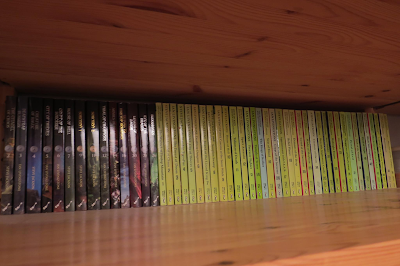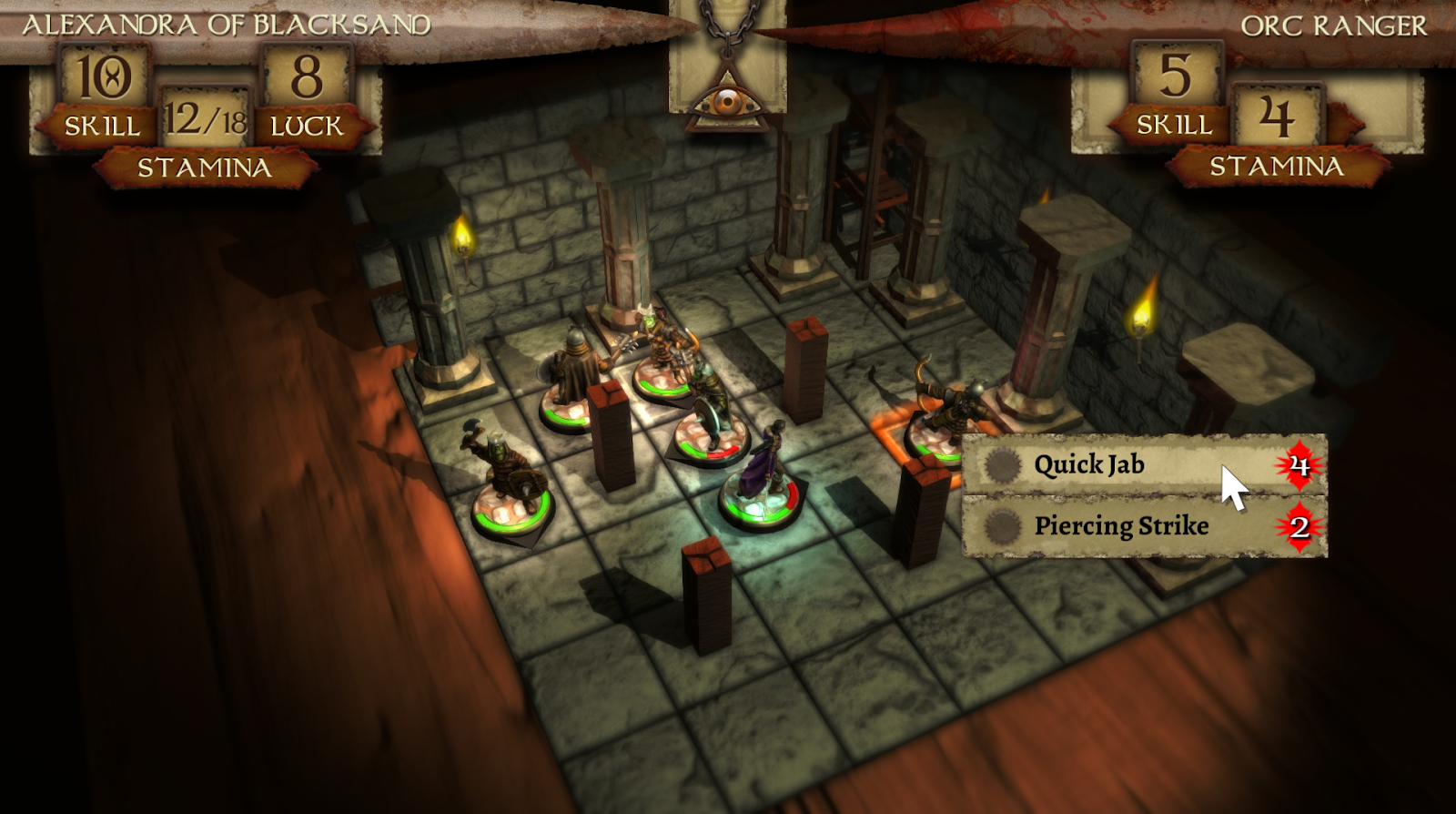The Mid-life Crisis of Firetop Mountain
FIGHTING Fantasy - a gateway to geekery for an entire generation - officially marks its 40th birthday this year.
It was 1982 that the first instalment in the definitive "Choose Your Own Adventure" series - The Warlock of Firetop Mountain - was published.
The gamebook, co-written by Games Workshop founders Steve Jackson and Ian Livingstone, offered an entry-level RPG experience. It was shield-bashing on a budget (RRP £1.95 - seriously).
"Two dice, a pencil and an eraser are you all need," exclaims the rather breathless back cover.
The simple mechanics were no doubt reassuring when weighed against the very many models you needed to build a Warhammer army and the hefty set of rules attached to D&D.
Twenty years on they also appealed to me when I got my hands on a re-release of the same book, brought out to cash in on the fresh wave of sword and sorcery euphoria in the early noughties.
At the time I was only just starting to make friends with a similar interest in goblins, so stripped back single-player experiences were an excellent introduction.
The stories were not exactly sophisticated, with almost all boiling down to being dropped in a very bad place with very many monsters and having to find the right items to kill off the snarly boss at the end.
There were no prizes for guessing who awaited you in Firetop Mountain, while later books would pit you against villains ranging from the top-knotted sorcerer Balthus Dire, who memorably branded you "an impudent peasant", and walking skincare case study Zanbar Bone.
Of course even reaching the final confrontation was notoriously hard, with the series apparently ramping up the number of inventive insta-deaths with every instalment.
A vast number of levers or chests or potion bottles led you to the not especially sympathetic note that "your adventure ends here". Or at least it did if you didn't cheat
Infamously, one entry - House of Hell - was impossible to complete after leaving readers unable to obtain the dagger which would do for the demonic butler at the book's denouement.
If the odd typo caused endless frustrations, the pictures sprinkled through every new book were always a pleasure. Black and white drawings in the inside pages contrasted with technicolour fronts fitting for the era of Flash Gordon.
For those who may say that no Bloodbeast drawn by mortal hand could outdo the one in your own imagination I would refer them to the reptilian horror on the cover of Deathtrap Dungeon.
While early illustrations are typical of the swashbuckling style of 1980s dungeoncrawls, later entries took a darker turn - leaning more heavily into gothic horror and sometimes pushing the boundaries of what you might expect from a Puffin Books line.
Eventually editors got wind of the increasingly adult tone and blocked an image of advancing vampire women with liberal amounts of blood splattered on their chests; the offending rivulets were rapidly removed with tippex.
The Hammer Horror-esque inspirations were one of several attempts to evolve the range over the course of 13 years and 59 books.
As early as the second release there was the rudiments of a spell-casting system, while there were also fleeting forays into genres like sci-fi, superheroes and even a Mad Max-style wasteland.
Jackson often proved himself the innovator of the two creators, while Livingstone preferred to push the boundaries within the original fantasy setting - joining dots between individual adventures to form a wider world map.
This in turn laid the grounds for spin-off projects, including an Advanced Fighting Fantasy system, using the core rules to ground a more traditional RPG in the Fighting Fantasy world.
There were also a couple of stand-alone boardgames - the Games Workshop adaptation of Warlock is especially strong - and a spin-off series of books, Sorcery, which aimed to stretch one epic adventure over four consecutive partworks.
All this left a wealth of material to discover when I started to get into gaming as a teenager.
I would buy the newly-minted editions from my favourite Solihull bookshop, while at the same time hunting down the eighties originals second hand - I'd learn to spot the unmistakeable lime green spines among the shelves of National Trust bookshops.
At the time the faded pages - still scribbled with previous adventurers' attempts - felt like ancient relics, so it's slightly sobering to think that my copy of Warlock is just as old now as those finds were then.
The fact that the original books are, as I write this, with a third publishing house and their fourth run shows the remarkable resilience of text-based adventures even in the iPhone age.
But it's also true that Jackson and Livingstone are still updating their original concept to take advantage of digital devices.
The arrival of the Kindle saw popular titles updated as e-books, complete with hyperlinks, auto-updating character sheets and virtual dice.
Other versions - such as a 2018 release of Warlock - were more like full-blooded videogames, with a 3D dungeon and grid-based combat.
And next year a new project will reimagine Deathtrap Dungeon as an interactive movie. A trailer suggests the film will borrow heavily from Netflix's own Bandersnatch. Although it's worth noting that the Black Mirror special had itself drawn on the gamebooks that Charlie Brooker grew up with.
Sooner than that, and most exciting for purists, was last week's announcement that the series' creators were both penning new adventures due out this autumn. While Livingstone has written a number of new entries since the noughties revival, this will be Jackson's first contribution for more than 30 years. There's life in the Warlock yet...







Comments
Post a Comment